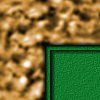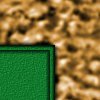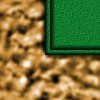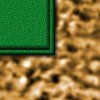
WHAT ARE SALAMANDERS AND NEWTS ? Salamander is a common name for the order of Caudata which includes 9 families, of which 8 are found in North America. Newt is a common name applied to certain members of a family of relatively small salamanders. Also in the order of Caudata are sirens which are aquatic salamanders, which have no hind limbs. So newts and sirens are really salamanders. Salamanders make up a mere 350 species out of the 4000 or so known species of amphibians.
APPEARANCE : Often mistaken for lizards, salamanders (sometimes called "sallies" by people who raise them) have soft, moist skin covering their long bodies and even longer tails. They have no scales, claws or external ear openings, and they lay eggs that are surrounded by clear jelly. The larva are sometimes confused with the frog tadpoles, but their heads do not get as large as the tadpole's heads. Salamanders have 4 toes on their front feet where lizards have five. They range in size from less than 2 inches (5cm) to the Giant Salamander of China and Japan at 4.9 feet (1.5m)!
These are all pictures of the Blue Ridge Two-lined Salamander (Eurycea wilderae)
(Please click for a larger view):





These are all pictures of the Mountain Dusky Salamander (Desmognathus ochrophaeus)
(Please click for a larger view):





Below are some more salamander photos that I took at Bent Creek while mountain bike riding (okay, I got off the bike to look for them). I had hoped to positively identify them, and I even bought a great book, but after having spent much time researching them on the internet, I conclude that they are salamanders, duskies, and the rest is my best guess. These guys are very hard to identify. They can look so different in every stage of their lives and they have alot of variations in every stage. The first photo is the stream where these salamanders were found.










WHAT THEY EAT : The majority of the salamanders and their larva are carnivorous, taking in insects and small invertebrates; the larger adults eat fish, worms, snails, and slugs. Secretive, essentially voiceless animals, they are chiefly nocturnal. They hide under fallen logs and damp leaf litter during the daylight hours where they find the fare that they feed upon. The larvae begin feeding immediately after hatching, devouring tiny aquatic animals.
 WHERE THEY LIVE : Salamanders and newts are found only in the Americas and in the temperate zones of Northern Africa, Asia and Europe. They live under stones in streams and under logs or leaves in moist forests. North America has more salamanders (including newts) than any other continent in the world. They are found throughout the Appalachian mountains, especially in the Great Smoky mountains. The Great Smoky Mountains National Park is the "Salamander Capital of the World". Though it is the most visited park in the National Park system, the great majority of vertebrate animals (including humans) in the park on any given day are salamanders. The cool and damp mountain forest environment provides ideal habitat for all types of salamanders. Soils rich in mineral composition and plant life provide for a multitude of invertebrates on which salamanders mostly feed. There are more than thirty different species here from five families of salamanders: the Cryptobranchidae, the Proteidae, the Salamandridae, the Ambystomatidae, and the Plethodontidae. The Plethodontidae are commonly known as the lungless salamanders. There are 24 species of lungless salamanders in the Great Smoky Mountains park. These salamanders lack lungs, but they do breathe. They breathe, as in exchange oxygen and cardon dioxide, through the walls of tiny blood vessels in their skin and linings of their mouths and throats. Salamanders vary in size from the tiny Pygmy salamander, which is less than 2 inches long, to the Hellbender, which reaches nearly 30 inches. Some such as the spotted salamander spend most of their time underground where it is moister and it has fewer enemies. Others, such as waterdogs and sirens never leave the water. WHERE THEY LIVE : Salamanders and newts are found only in the Americas and in the temperate zones of Northern Africa, Asia and Europe. They live under stones in streams and under logs or leaves in moist forests. North America has more salamanders (including newts) than any other continent in the world. They are found throughout the Appalachian mountains, especially in the Great Smoky mountains. The Great Smoky Mountains National Park is the "Salamander Capital of the World". Though it is the most visited park in the National Park system, the great majority of vertebrate animals (including humans) in the park on any given day are salamanders. The cool and damp mountain forest environment provides ideal habitat for all types of salamanders. Soils rich in mineral composition and plant life provide for a multitude of invertebrates on which salamanders mostly feed. There are more than thirty different species here from five families of salamanders: the Cryptobranchidae, the Proteidae, the Salamandridae, the Ambystomatidae, and the Plethodontidae. The Plethodontidae are commonly known as the lungless salamanders. There are 24 species of lungless salamanders in the Great Smoky Mountains park. These salamanders lack lungs, but they do breathe. They breathe, as in exchange oxygen and cardon dioxide, through the walls of tiny blood vessels in their skin and linings of their mouths and throats. Salamanders vary in size from the tiny Pygmy salamander, which is less than 2 inches long, to the Hellbender, which reaches nearly 30 inches. Some such as the spotted salamander spend most of their time underground where it is moister and it has fewer enemies. Others, such as waterdogs and sirens never leave the water.
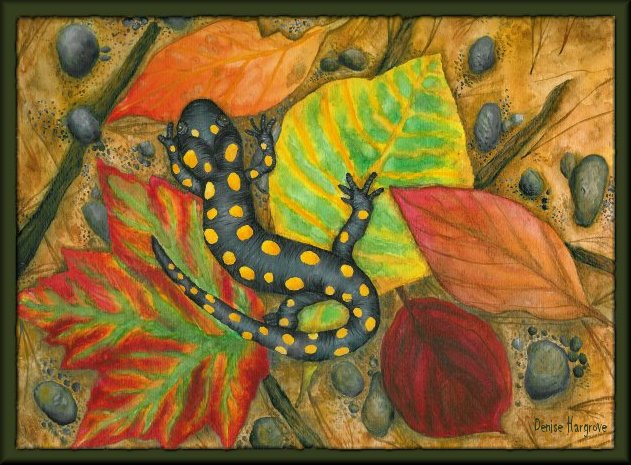
GENERAL CHARACTERISTICS : There are three types of salamanders: totally aquatic, semi-aquatic, and completely terrestrial; some of the latter are arboreal. The aquatic live out their complete life cycles in the water. The semi-aquatic live primarily on land, hibernating during the winter, and enter the water as breeding season begins. After mating and egging is complete, they once again return to land. The terrestrial salamanders spend their entire lives on land, rarely entering the water though they are never far from it. Early born young will reach the terrestrial stage by the end of the year; late born young usually overwinter as larvae, metamorphosing the following spring. Most salamanders lay eggs in the water which hatch into larvae with tufted external gills, with which they use to breathe. Those who lay eggs on land do not go through this stage, such as the Woodland salamander. Several salamanders including the waterdogs and sirens never loose their gills and never leave the water. Others, after several months to several years, lose their gills and tranform into land dwelling species. Adult salamanders either breathe through their skin or with lungs. Most are active only at night. Though they normally remain hidden under leaves, they will come out during heavy rains and pursue their prey away from shelter.
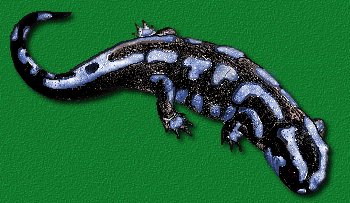 SPECIES FOUND IN THIS AREA : In the southern Appalachians are found: the Pygmy salamander, a terrestrial species adapted to high-elevation forests, the Hellbender, found in warmer low-altitude streams, the Eastern newt, Jordan's salamander, Marbled salamander, Mountain Dusky salamander, Appalachian Woodland salamander, Blue Ridge Two-lined salamander, and the Red salamander are also found here. As well as many more species.
SPECIES FOUND IN THIS AREA : In the southern Appalachians are found: the Pygmy salamander, a terrestrial species adapted to high-elevation forests, the Hellbender, found in warmer low-altitude streams, the Eastern newt, Jordan's salamander, Marbled salamander, Mountain Dusky salamander, Appalachian Woodland salamander, Blue Ridge Two-lined salamander, and the Red salamander are also found here. As well as many more species.
CLASSIFICATION : They are classified in the phylum -Chordata, subphylum -Vertebrata, class -Amphibia, order -Caudata.
To find out more about amphibians just find and click
on the frogs in the coconut tree at the top of this page!
Or try these links:
Frogs | Toads | Salamanders and Newts | Caecilians
Click here to return to Caribbean Amphibian
Home
Site Map
Email at: dh @ naturehaven.com
(Take out the spaces and this email address will work!)
Ribbit! Ribbit!
|
